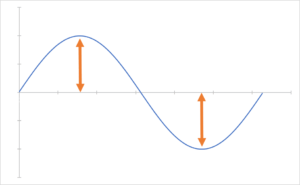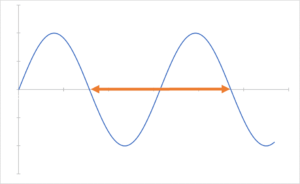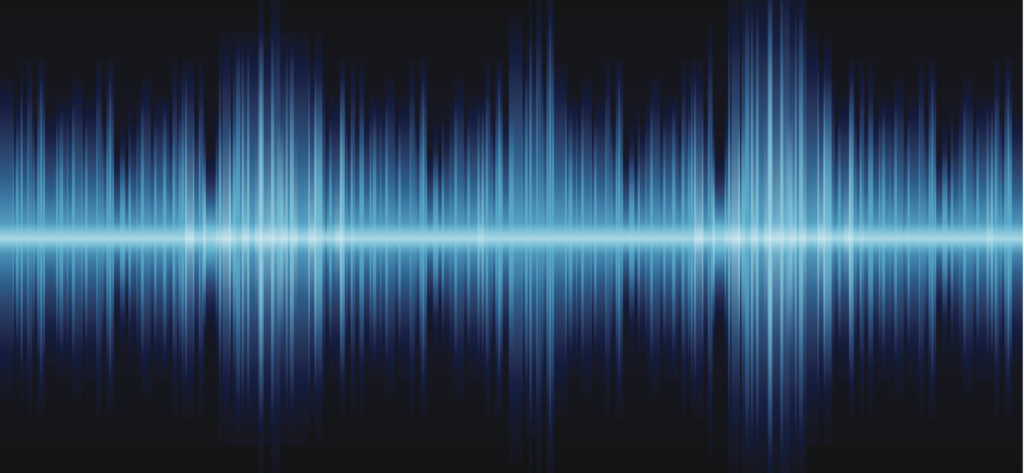A
A-weighting
Frequency weighting filter for sound pressure levels that de-emphasizes low frequencies. The A-weighting filter approximates the response of the human ear at low sound pressure levels (around 40 dBA). A-weighted levels are reported in A-weighted decibels (dBA). Commonly used for environmental, workplace, and community noise. Read more.
Absorption
Much like a sponge absorbs water, some materials are good at absorbing vibrational energy. Absorptive materials transform sound energy into heat or motion.
Acoustics
The study of sound and vibration. While acoustics is fundamentally a branch of physics, it has applications across many disciplines. Lindsay’s Wheel of Acoustics gives an overview of acoustics.
Active Noise Control
Using a signal designed to reduce unwanted sound by destructive interference. This is the kind of noise control used in noise cancelling headphones. Active noise control requires knowledge about a sound before the sound is received. Thus, it works best for sustained and consistent sounds as with HVAC noise or noise from a jet engine.
Ambient
Referring to surroundings. For example, ambient temperature is the general temperature of the air around a thermometer, not the temperature of a single air molecule.
Amplitude
The height of a wave. Often when people talk about the amplitude of a sound wave, they are talking about the maximum amplitude—the difference between a center reference value and the maximum value of the wave. Read more.

Anechoic Chamber
A special testing room with acoustic wedges on the floor, ceiling, and walls to absorb and dissipate sound energy. The word anechoic means echo-free. Read more.
Array
A group of devices acting in tandem. Common types of arrays in acoustics include microphone arrays and loudspeaker arrays.
Attenuation
A decreasing or shrinking. The term is often used in signal processing when trying to remove (or attenuate) unwanted noise from a signal.
B
B-weighting
Frequency weighting between A- and C-weighting. No longer in use. Read more.
Baffle
A flat surface that inhibits the propagation of sound waves. Panels and other noise barriers are often used as baffles for passive noise control.
Broadband
A word used to describe a signal containing a wide range of frequencies. In other words, a signal with a broad band of frequencies.
C
C-weighting
Frequency weighting that represents human hearing at loud sound pressure levels (around 100 dB). Most often used with machine and jet noise. Reported in dBC. Read more.
Compression
The part of a sound wave where the particles of a medium are bunched together. Sound is a longitudinal wave and travels as compressions and rarefactions (kind of like an accordion).
Condenser Microphone
Also called a capacitor microphone. A microphone that converts sound waves to an electrical signal using variable capacitor. One of the charged membranes of the capacitor moves back and forth with pressure fluctuations, varying the voltage output. Read more.
CNEL
Community noise exposure level. California variant of DNL that boosts evening (7 PM to 10 PM) sound pressure levels by 5 dB and nighttime (10 PM to 7 AM) sound pressure levels by 10 dB prior to averaging. Read more.
D
D-weighting
Frequency weighting historically used for jet noise. No longer in use. Read more.
Decibel
A relative unit used to show the ratio between a reference value and a measured value, scaled logarithmically. As a result, decibel values (denoted dB) cannot be directly added or subtracted. While decibels are used for relative sound power levels, voltage levels, and acceleration levels, sound pressure levels are the most common use of decibels in acoustics. For reference, the sound pressure level of a conversation is about 50–60 dB while a rock concert is about 100–110 dB. Read more.
Destructive Interference
When two (or more) signals combine in such a way that they negate each other. Ideal destructive interference of a signal (sound or electrical) requires that one signal be 180 degrees out of phase with the other. Two such signals are shown in the graph below:
Diaphragm
In a microphone, the diaphragm is a membrane that moves with incoming sound waves.
Directivity
The relative strength of a sound source in a particular direction. Ideal point sources, which are often used in acoustic models, have a uniform spherical directivity pattern (same in all directions). Read more.
DNL (Ldn)
Day-night level. A community noise metric that represents the “average” noise in a community. Sound pressure levels measured between 10 PM and 7 AM are boosted 10 dB to encourage quieter levels at night. Read more.
Dynamic Microphone
Also called a moving-coil microphone. A microphone that changes sound to an electrical signal by movement of an electrical coil inside a permanent magnet. The coil is attached to a diaphragm which moves with incoming sound waves. Dynamic microphones operate on the same principle as loudspeakers. Read more.
E
Echo
A distinct, discernible reflection of a source signal. The delay between a sound and its echo can be used to calculate the distance to the reflecting surface.
F
Fast Time-weighting
Time-weighting that takes 0.125 seconds to respond to changes in sound level. Gives a good idea of “average” sound levels while also allowing resolution for shorter events. Read more.
Frequency
The number of cycles in a unit of time. Frequency is usually measured in hertz (Hz), which is the number of cycles per second. Changes in frequency are heard as changes in pitch, with a high frequency corresponding to high pitch sounds and a low frequency corresponding to low pitch sounds.
G
The hunt for words that start with G is on.
H
High pass filter
A signal filter that allows frequencies above the cutoff frequency to pass through the filter unchanged while attenuating the frequencies below the cutoff frequency.
I
Impedance
Acoustic impedance is a medium’s effective resistance to transferring sound energy. Factors that affect impedance include material properties like mass and stiffness as well as geometric properties like size and shape. When sound passes from one a material to another with a different acoustic impedance, energy is lost. Read more.
Impulse
A sharp, short sound like a single gunshot or a firecracker explosion. Generally, impulses are shorter than one second in length (often much shorter.)
Impulse Time-weighting
Time-weighting that takes 0.035 seconds to respond. Mimics the response of the human ear to loud sound. Least often used time-weighting. Read more.
Infrasound
Sound with frequencies below the audible range. This generally means sounds with frequencies of 20 Hz or less.
Insertion loss
The difference in sound pressure level in decibels between when a barrier is present and when it is not. Insertion loss can be used to determine how well a noise control device works.
Interference
The way two or more signals interact, determined by adding the signals together. Interference can be constructive or destructive.
J
The hunt for words that start with J is on.
K
The hunt for words that start with K is on.
L
Leq
Stands for continuous equivalent sound level. Represents the total sound energy over the course of a measurement. Common metric for noise studies. Read more.
Low Pass Filter
A signal filter that allows frequencies below the cutoff frequency to pass through unchanged while attenuating the frequencies above the cutoff frequency.
Lmax
Maximum value of a time-weighted sound pressure level. Not to be confused with Lpeak. Read more.
Lmin
Minimum value of a time-weighted sound pressure level. Read more.
Lpeak
Level of maximum pressure value before any processing. Not to be confused with Lmax. Read more.
M
Medium
Matter that interacts with vibrations. Sound can travel through solids, liquids, and gases, but not through a vacuum. The plural of medium is media.
Megaphone
A cone shaped device used to amplify the voice. Megaphones improve directivity and impedance mismatch when communicating with large groups. Read more.
Membrane
A thin sheet. The diaphragm of a microphone is a membrane, thin and light enough to move with incoming sound waves.
N
Noise
The word noise has several meanings. In environmental and community acoustics, noise is the collection of all sounds in an area. In noise control, noise is unwanted sound. In signal processing, noise is unwanted information in a signal, where it is often discussed as part of the signal-to-noise ratio (SNR).
O
OSHA
Stands for Occupational Safety and HEalth Administration. A sub-organization of the United States Department of Labor. OSHA sets the permissible standards for noise exposure in the workplace.
P
Passive Noise Control
Using geometry and absorption to decrease noise. Often, passive noise control solutions involve insulation or mufflers.
Period
The length of time it takes to complete one full cycle of a wave. The period of a wave is measured in seconds. The period is the inverse of the frequency.
Pink Noise
Noise with sound across many frequencies, where the acoustic intensity of the sound at a given frequency is inversely proportional to the frequency. Pink noise is often used to simulate HVAC noise.
Preamplifier
Preamp or Pre for short. Strengthens and cleans a signal from a microphone, often raising the signal to line level, for further use in an audio system. Read more.
Q
The hunt for words that start with Q is on.
R
Rarefaction
The part of a sound wave where the particles of a medium are spread apart. Sound is a longitudinal wave and travels as compressions and rarefactions (kind of like an accordion). Read more.
Refraction
A change in a wave’s direction due to a change in the medium it’s traveling through. Sound waves can change direction when passing from one medium into another (e.g. from air into water) or as the attributes of the medium change (e.g. change in temperature or wind speed.) Read more.
Root-power
Sound pressure, voltage, and current are root-power quantities. These values must be raised to a power to calculate energy-based quantities like sound power, intensity, and energy density.
S
Slow Time-weighting
Time-weighting that takes one second to respond to changes in sound level. Gives a good picture of the “average” sound level. Read more.
Sound
While sound is technically defined as a wave that uses vibration to move energy through a medium, often it is taken to mean vibrations that can be heard. Normal human hearing covers a range of frequencies from 20 Hz to 20,000 Hz.
T
Transducer
A device that changes an input signal of one type of energy (a sound wave, for example) into an output signal of another type of energy (usually electric). Microphones are classified by their transducer (Dynamic, Condenser, etc.)
U
The hunt for words that start with U is on.
V
The hunt for words that start with V is on.
W
Wavelength
The length of one full cycle of a wave. Wavelength is often represented by the Greek letter lambda (λ) which is the equivalent of the Latin L for length. Read more.

White Noise
Noise with equal acoustic intensity across all frequencies. To the human ear white noise sound like static.
X
The hunt for words that start with X is on.
Y
The hunt for words that start with Y is on.
Z
Z-weighting
Also called unfiltered or flat weighting. A frequency weighting filter where all frequencies in a specified range are weighted equally. Read more.


